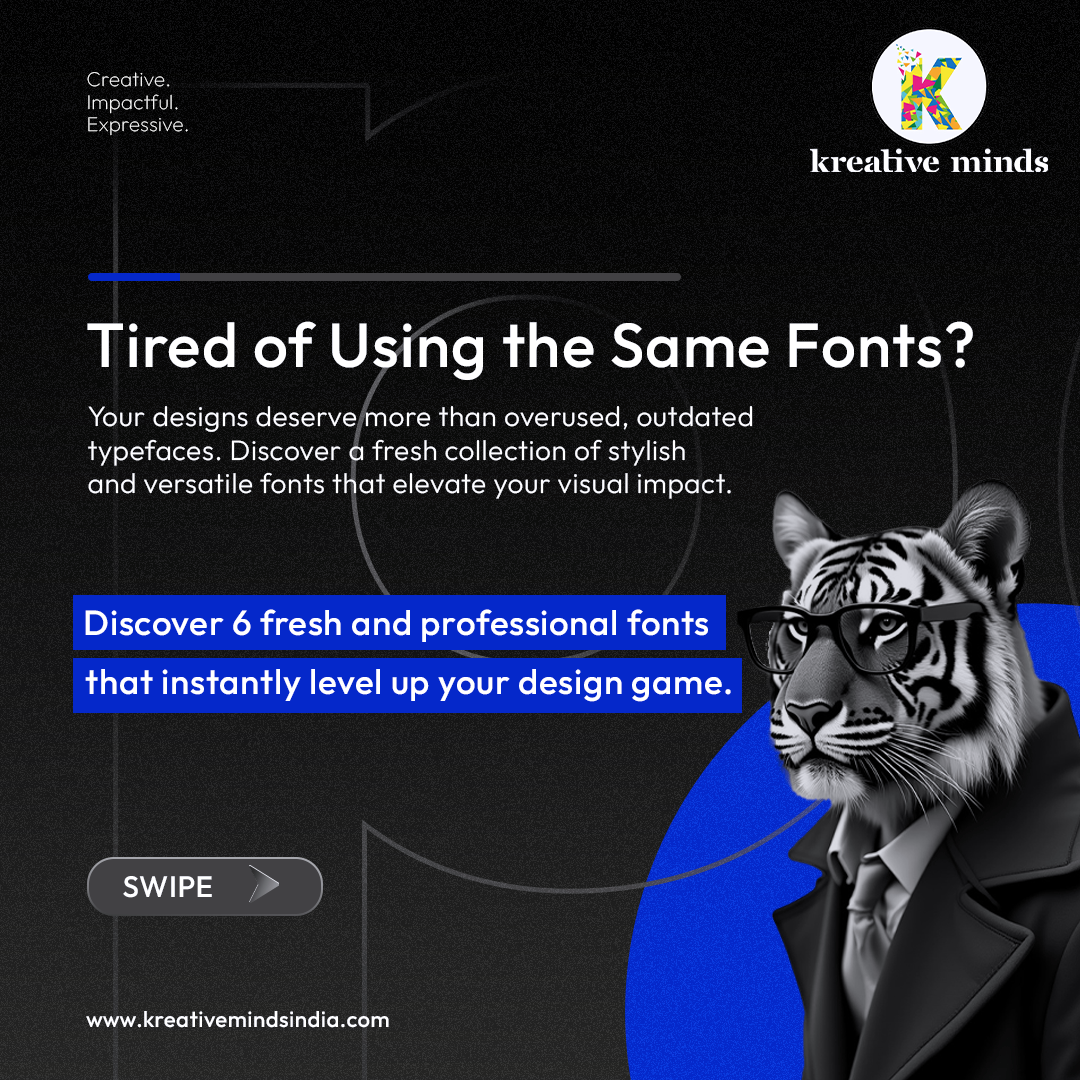How to Choose the Right Fonts for Your Design
How to Choose the Right Fonts for Your Design
Fonts are more than just letters on a screen — they’re visual voices. The right font captures attention, conveys emotion, and brings your design to life. Whether you’re working on a logo, a social media post, a website, or any piece of branding, typography plays a vital role in how your message is perceived.
Choosing the right fonts can make your design feel modern, luxurious, playful, elegant, or professional — and choosing the wrong ones can confuse, distract, or even push your audience away. In this blog, we’ll explore essential principles to help you select fonts that not only look great but also serve your design’s purpose effectively.
1. Understand the Purpose of the Design
Before diving into font libraries, ask yourself a simple question:
What is this design meant to achieve?
Is it an invitation to a wedding, a tech startup’s website, a restaurant menu, or a corporate presentation? Each design has its own tone, goals, and audience.
-
A luxury fashion brand might use a sleek serif font to signal elegance.
-
A children’s birthday invite might need a rounded, playful font.
-
A modern app UI may benefit from a minimalist sans-serif.
Always let the purpose of your design guide your font decisions. It’s about communication first — style second.
2. Know Your Audience
Good design speaks directly to its target audience. Understanding who will see your design helps you choose fonts that resonate.
-
Teens and young adults often engage better with bold, edgy, or quirky fonts.
-
Professionals and older audiences prefer clean, legible, and subtle typefaces.
-
Children respond to fonts that are friendly, round, or handwritten.
Make sure the font style aligns with what your audience expects — and how they consume information.
3. Stick to 2–3 Fonts Maximum
Overusing fonts creates visual clutter. The most effective designs usually rely on a maximum of two or three typefaces, each serving a specific purpose:
-
Headline font: Bold, attention-grabbing
-
Body font: Clean, readable
-
Optional accent font: For quotes, highlights, or callouts
Pairing fonts is like matching outfits — contrast can work if it’s balanced. A bold serif heading and a simple sans-serif body text often complement each other well. Always test font combinations to ensure harmony.
4. Prioritize Readability
No matter how beautiful a font looks, it’s pointless if people can’t read it easily.
Avoid using decorative or overly artistic fonts for long paragraphs. Those are better suited for short headers or logos. For large blocks of text, choose fonts that are:
-
Well-spaced with clear letterforms
-
Not too thin or overly bold
-
High in contrast against the background
-
Optimized with proper kerning and line height
Think about how your design will be consumed — on a screen, in print, outdoors, or on mobile. Clarity always comes first.
5. Right Fonts with Brand Personality
Every brand has a tone and personality, and your font choice should reflect it. Here’s a quick breakdown:
-
Serif fonts (e.g., Georgia, Playfair Display): Classic, elegant, trustworthy
-
Sans-serif fonts (e.g., Helvetica, Montserrat): Modern, clean, neutral
-
Script fonts (e.g., Pacifico, Great Vibes): Feminine, creative, romantic
-
Display fonts (e.g., Bebas Neue, Impact): Bold, expressive, dramatic
Stay consistent with the brand’s tone across all platforms — from logos to presentations and social media posts. Fonts are part of visual branding and should be treated with just as much thought.
6. Test Across Devices and Formats
A font that looks great on your desktop might not hold up on a small mobile screen or in print. Always test your fonts in real-world conditions:
-
Print samples for physical designs like flyers or packaging.
-
View website fonts across desktop and mobile devices.
-
Ensure legibility and rendering consistency.
When designing for digital, use web-safe Right fonts or source fonts from reliable platforms like Google Fonts or Adobe Fonts to avoid display issues.
Final Thoughts
Choosing the right font is a blend of art and strategy. It’s not just about what looks stylish — it’s about what communicates your message effectively. The right typography enhances user experience, improves clarity, and creates emotional resonance.
So next time you start a project, don’t rush font selection. Think about your message, medium, and audience. With the right type choices, your design won’t just look good — it will speak volumes.
The Art of Video Editing: Transforming Raw Footage into Compelling Stories


